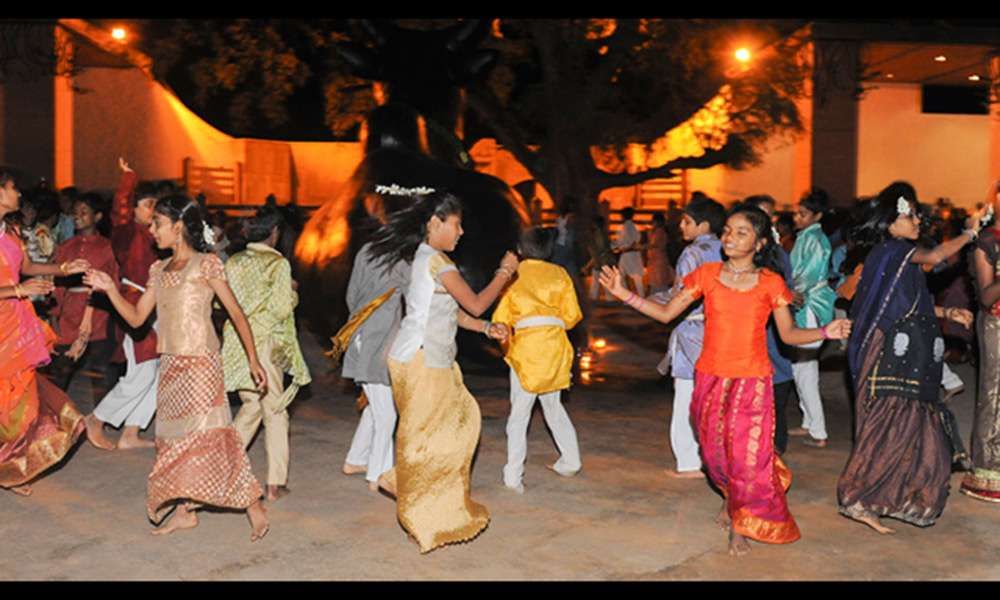The Importance of Indian Festivals - Making Life a Celebration!
Sadhguru explains the importance of festivals in Indian culture, and how celebration can be a passageway to the most profound aspects of life. Further down is a list of articles about various festivals, where Sadhguru explains the significance of each one of them.

Click Image to Enlarge
Embed this infographic
Make life a celebration
Nowadays, unfortunately, a festival means they give you a holiday, and you wake up only at twelve noon. Then you eat a lot and go for a movie or watch television at home. It wasn’t like that earlier. A festival meant the whole town would gather in a place and there would be a big celebration. A festival meant we got up at four in the morning, and very actively, lots of things happened all over the house.
To bring back this culture in people, Isha celebrates four important festivals: Pongal or Makara Sankranti, Mahashivratri, Dussehra and Diwali. If we don’t create something like this, by the time the next generation comes, they will not know what a festival is. They will just eat, sleep and grow up without concern for another human being. All these aspects were brought into Indian culture just to keep a man active and enthusiastic in so many ways. The idea behind this was to make our whole life into a celebration.
The Importance of Festivals
If you approach everything in a celebratory way, you learn to be non-serious about life but absolutely involved. The problem with most human beings right now is, if they think something is important, they will become dead serious about it. If they think it is not so important, they will become lax about it – they don’t show the necessary involvement. You know, in India when someone says, “He is in a very serious condition,” that means his next step is you know where. A lot of people are in a serious condition. There is only one thing that is going to happen to them which is of any significance. The rest will bypass them because with anything that they think is not serious, they are unable to show involvement and dedication towards that. That is the whole problem. The passage, the secret of life is to see everything with a non-serious eye, but be absolutely involved – like a game. That is the reason the most profound aspects of life are approached in a celebratory way, so that you don’t miss the point.
Makara Sankranti festival, traditionally seen as a harvest festival is a day when there is a significant movement in the zodiac – the arrangement of the earth’s dial around the sun.
Sadhguru looks at the significance of Pongal, celebrated in the month of Thai in the Tamil Calendar.
Mahashivratri, is perhaps the most important of festivals in India, and offers a powerful possibility for spiritual growth.
Ugadi marks the Telugu new year, and also shares its date with new year celebrations in several other parts of the country. Sadhguru looks at the nature of the Indian calendar and explains why this period of the year was chosen as the new year.
The full moon day of Ashadha is Guru Purnima. Sadhguru tells us why we celebrate Guru Purnima, and recounts the story of the first Guru, 15,000 years ago.
The festival of Naga Panchami is not merely snake worship as commonly believed, but has a much deeper significance. Sadhguru explains the snake symbolism and the immense possibility that it is.
Mahalaya Amavasya or Pitru Paksha
Mahalaya Amavasya or Pitru Paksha is an important occasion when one traditionally honors his or her ancestors. Sadhguru explains the science behind these rituals.
Navratri is a period of nine days celebrating the Divine Feminine. Sadhguru delves into the deeper spiritual aspects of this festival, revealing how the three main qualities in existence are manifest in these nine days.
Dussehra, also known as Vijayadashami or “the day of victory,” comes after the nine nights of Navratri. Sadhguru talks about the significance of the auspicious 10th day and how this occasion can bring success and victory into our life.
See Diwali in a completely new light as Sadhguru reveals the spiritual significance of one of the most exuberant festivals in the world.
Subscribe



